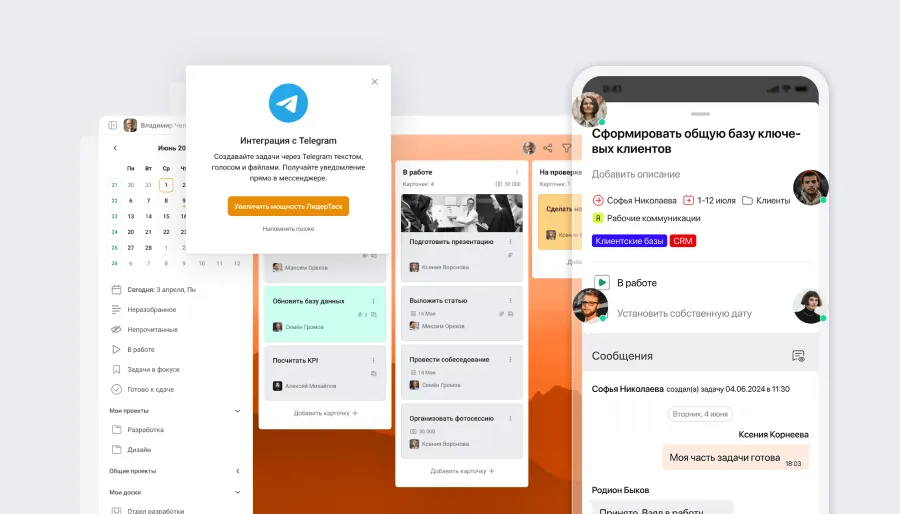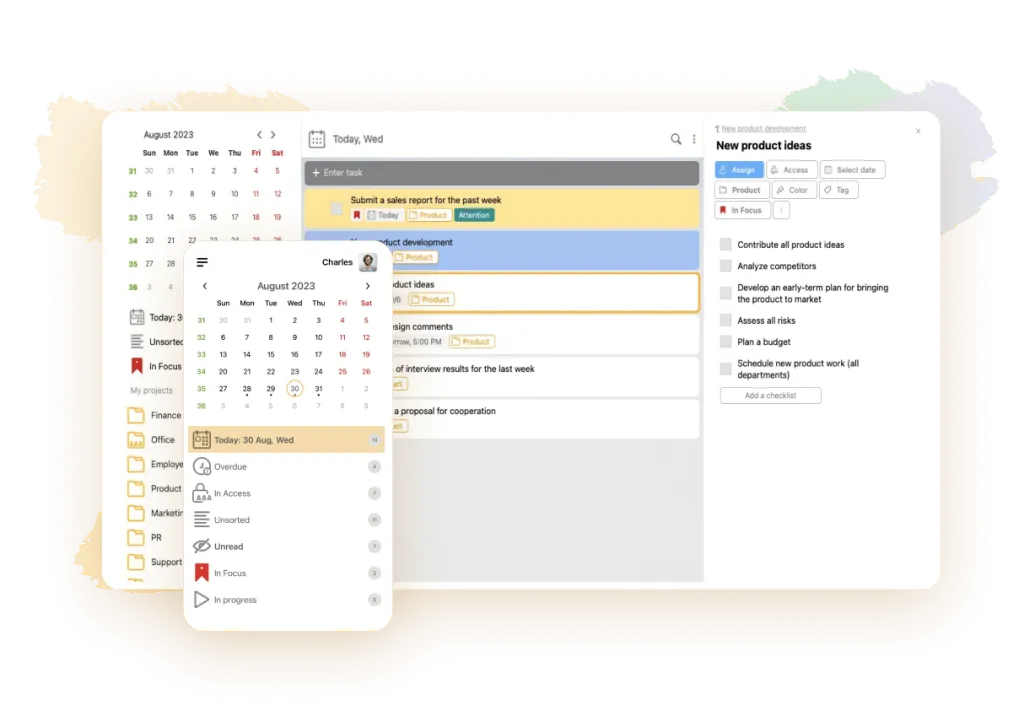
Ted Scott
March 20, 2024
To determine the productivity of companies and their employees, labor productivity indicators are used. On the basis of their analysis, various management decisions are made concerning the increase or reduction of staff, the need to modernize production or personal changes. The higher the indicators, the better the business is performing.
In what is the increase in labor productivity
The criterion determines how useful an employee is to the company and how efficiently he works. Based on this indicator, standards are developed and methods of motivation and labor remuneration (in the form of salary or hourly wage) are approved. Increased productivity contributes to increased profits of companies, effective development of the economy as a whole.
The growth of labor productivity is followed by the growth of the population’s welfare. Due to the timely transfer of taxes and increase in wages, the social sphere is developing, pensions and social payments are increasing, and free medical services are becoming more accessible.
Productivity indicators, methods of their calculation and analysis
By comparing the data on productivity in dynamics, it is possible to assess how loaded the company’s employees are, whether it is necessary to reduce or, on the contrary, to expand the staff. The analysis will give an idea of what innovations will affect the efficiency of the enterprise. For example, an increase in salary or the introduction of a system of personal incentives for employees.
The study of the obtained data will help to find places in management that need to be reorganized or “tightened”. To accurately determine the criterion, a special formula is used:
PT = Volume of goods produced ÷ Number of employees of the company (department).
Simply put, this parameter consists of two elements: output and labor intensity. Output is the volume of products or services performed by an employee. It is calculated as follows:
B = Volume of products, services (in money, standard hours or in kind).
Labor intensity shows how much labor is required to create one product. It is determined by the formula inverse of productivity: Labor intensity = Unit of time ÷ Quantity of goods produced.
Several methods are used to evaluate effectiveness:
-
Natural. Accounts for the number of items produced piece by piece by an employee (shop, enterprise). It is used at industrial enterprises producing homogeneous products.
-
Cost (monetary). It is used in industries characterized by frequent price changes, engaged in the production of heterogeneous products. For example, in a factory producing 10 blouses and 4 pantsuits per day, labor efficiency will be higher in the department producing suits, because their market value is higher.
-
Labor. Determines how much time an employee spent on the task at hand. This method is used to determine productivity in the service industry.
In analytics, three types of performance are distinguished:
-
Nominal. It denotes how many goods or services can be produced using 100% of the company’s resources. This parameter is used in project planning.
-
Actual. If a seamstress makes 16 shirts in a shift of 8 hours, actual output is 2 pieces per hour.
-
Potential. Demonstrates how much it is possible to increase the output of products or services with the help of new management technologies, modern planning and work organization tools.

Ways to increase labor productivity
Many factors influence the level of labor productivity. Possible ways to increase it:
-
Increasing the quantity of products or services without compromising quality;
-
improving the quality of manufactured products (rendered services) while maintaining the production volume;
-
reduction of labor costs per unit of goods;
-
reduction of the total share of labor costs in the cost of production.
Achievement of the above results is possible with the implementation of a set of measures, including:
-
Ensures full utilization of production capacities. Prevents intensive operation or overloading of one type of equipment while another is idle.
-
Improving the logistics of the enterprise.
-
Automation of production processes. Replacing live labor with hardware significantly speeds up the production process, making it possible to eliminate errors due to the human factor.
-
Improvement of management and organizational structure. It allows to introduce modern methods of project management, increase the responsibility of mid-level personnel, and reduce the burden on managers by delegating personal authority to employees.
-
Personnel motivation. It represents encouragement in the form of bonuses, other monetary rewards, allowances for professionalism, special working conditions. Or it is manifested in non-material form (increased vacation, the opportunity to work on a flexible schedule or remotely).
-
Creates comfortable conditions at workplaces. Improves the emotional state of the team, helping them to cope with tasks faster.
-
Professional development of employees in courses or trainings.
-
Observance of labor discipline in the team. Employees should understand their responsibility to the company and spend their working day for the benefit of the common cause and the team, without being distracted by extraneous matters. This will allow to quickly cope with any projects, achieving the set goals with less labor and time.
Labor productivity in services, sales, IT is influenced by the decisions and actions of managers. Therefore, in this case it is important for the manager to set goals correctly. They should be realistic and achievable, so that the staff can take them responsibly and seriously.
Employees should concentrate on their personal tasks and not be dispersed into a multitude of small tasks that are not part of their direct duties. They should not be responsible for cleaning the office (store, hairdresser’s) or sending correspondence to the post office. It would be better if this was handled by a separate employee, while the main specialists would spend their working time for the greater benefit of the company.
Delegation of authority, which allows to relieve the manager from routine tasks to solve important strategic issues, can increase performance. By distributing current tasks among subordinates, it is possible to prevent burnout of management personnel due to overload, increasing responsibility and leadership qualities of the company’s employees.
Personnel training should be an important part of the company’s corporate culture. Continuous personnel development activities are a prerequisite for the company’s survival in market conditions.
Factors of labor productivity increase
Negative factors that reduce productivity include:
-
increased depreciation of the company’s fixed assets;
-
use of outdated technology;
-
incompetent management of the enterprise;
-
unfavorable microclimate in the work team;
-
low wages.
Competent project management will help to avoid these problems. The manager assembles a team of qualified specialists. He organizes suitable conditions for each team member, motivates employees, and maintains a favorable emotional climate within the team.
Possible factors for increasing labor productivity include:
-
Material and technical. They imply improvement of the company’s production base by introducing modern equipment, automation of production processes, use of resource-saving technologies.
-
Organizational and economic. They include improvement of personnel, material equipment, organization of work and rest of employees, their motivation and application of progressive methods of payment and motivation.
-
Social and psychological. They include measures to improve the working conditions of employees, create a favorable environment within working teams, and improve the quality of life.
Emotional state of employees and job satisfaction have a positive impact on efficiency. Interested people work with greater efficiency. This leads to increased profits and company development. Employees who are disengaged from the work process demotivate others, reducing the overall productivity of the company.
In teams with a large number of dissatisfied employees, conflicts often arise due to personal grudges, misunderstandings, overloading the work of some specialists at the expense of freeing up others. People lose interest in their work and perform it poorly. The task of each manager is to form a positive attitude to work in his subordinates, using individual approaches and modern project management tools.
Mistakes
One of the first mistakes of many companies is the unjustified expansion of the administrative and management apparatus. People who have been given high positions claim higher salaries. However, they are not always able to take responsibility or competently supervise their subordinates. To demonstrate their weight in the team, such leaders organize endless meetings. They demand reports from their subordinates on any issues, preventing them from focusing on their direct duties.
You can avoid the presence of “superfluous” people in the company’s management by using a simple formula for building a management structure. One manager is sufficient for a group of 7-10 people. For larger organizations, for example, of 50 people, a two-stage management system is suitable, including 5 managers managing departments of 10 people and a general director.
Another mistake that leads to a decrease in labor productivity: unnecessary service personnel who are idle most of the time. To solve this problem, we need to analyze the workload of the management staff and support services and optimize the number of employees.
Illiterate decisions of managers and improper organization of personnel work negatively affect efficiency.
Programs to help increase productivity
For efficient work within a company, it is important to use modern technical tools to help plan and organize work processes. These are special programs, services, electronic assistants and digital applications for individual and group work. Electronic schedulers help to competently distribute tasks among executives, control the progress of their fulfillment, and make timely adjustments.
These include programs such as:
LeaderTask
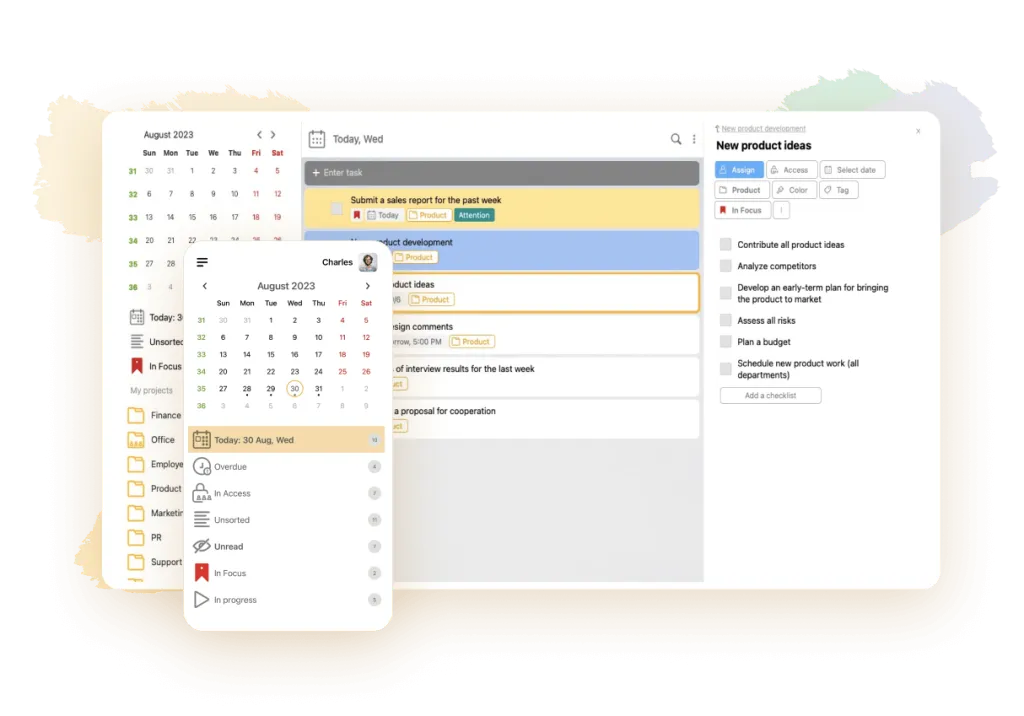
A popular electronic application for improving personal and corporate efficiency, allowing to increase the productivity of employees several times due to the systematization and rational organization of working time.
The program works on the system of “Getting Things Done”, which means bringing things to the finish line by making lists, prioritizing them and following a certain schedule.
Using the LeaderTask scheduler, it is easy to control daily and strategic tasks. By putting work processes in perspective, it is convenient to adjust deadlines, delegate tasks or make notes on task execution. The application functionality includes the following tools:
-
calendar with the option to add notes by day;
-
reminder system;
-
“Projects” tab with division into tasks and subtasks;
-
synchronization functions with various digital devices;
-
working with Outlook,
-
ability to export and import various formats;
-
Gantt chart;
-
matrix: “Urgent/Important”;
-
network version as a multi-user organizer and others.
Benefits:
-
A complete set of tools to accomplish any task;
-
Free trial version;
-
User-friendly, clear interface;
-
Easy to operate without special training;
-
Support for all major time management methodologies;
-
Attractive design.
Trello
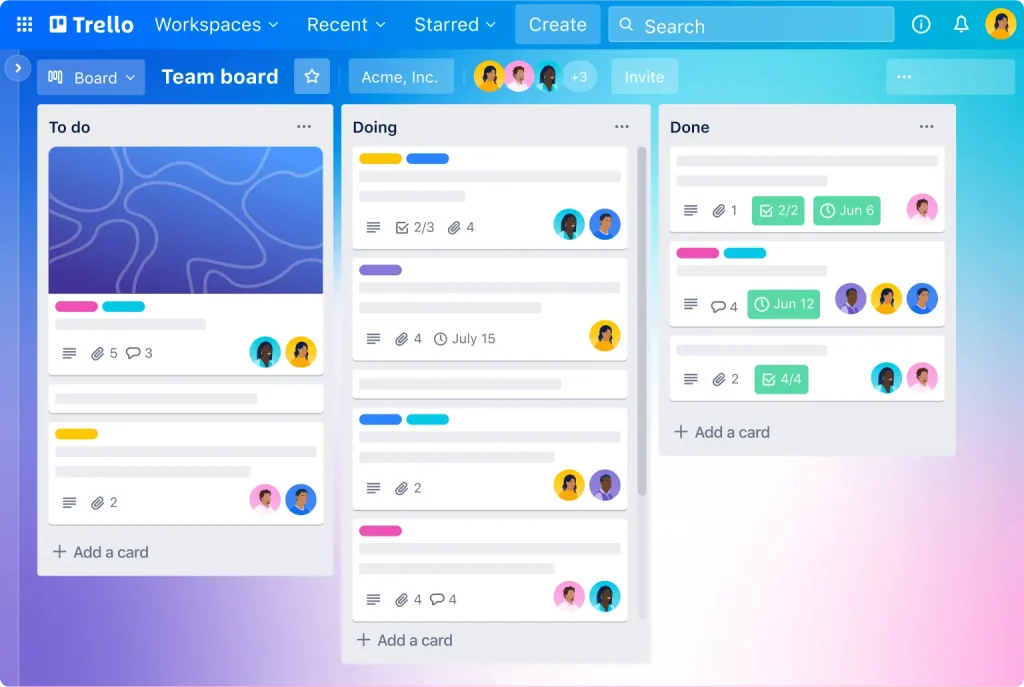
A clear, easy-to-use planner that helps to realize any project in team or individual work. It functions on the principle of kanban boards. The main screen of the program is presented in the form of a task bar divided into columns including planned, ongoing and completed activities. As tasks are completed, they are moved to the corresponding column.
When using the application as a work and personal time organizer, the user is provided with the following tools:
-
cards with the ability to edit and fill in information via simple Markdown tags;
-
Gmail integration, allowing you to instantly add emails from your email client as tasks;
-
Report Creation;
-
Activity log with progress bar;
-
Collaboration with Dropbox, Slack, Evernote, X, and other services;
-
Shortcut keys;
-
File Storage;
-
Archiving of maps and boards, etc.
Benefits:
-
Extended functionality in the free version.
-
Continuous updates that improve the performance and efficiency of the program.
-
Comfort in application.
-
Reliable performance on all platforms.
Monday
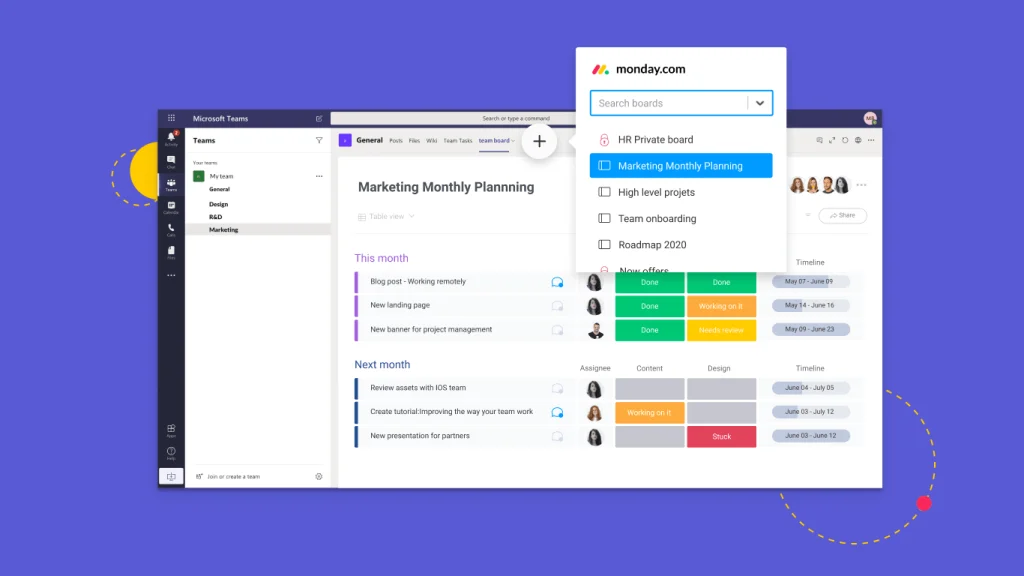
A modern application for planning and organizing quick collaboration in teams in the form of a kanban board that allows you to coordinate the work of the team, track the number of planned, active or overdue tasks on the diagram. The program functionality includes the following tools:
-
calendar;
-
diagram;
-
adding files;
-
Kanban board;
-
a map to track staff workload;
-
timeline.
Benefits:
-
User-friendly interface.
-
Availability of ready-made templates to get you started quickly.
-
Various options for displaying tasks.
-
Free Trial.
GanttPRO
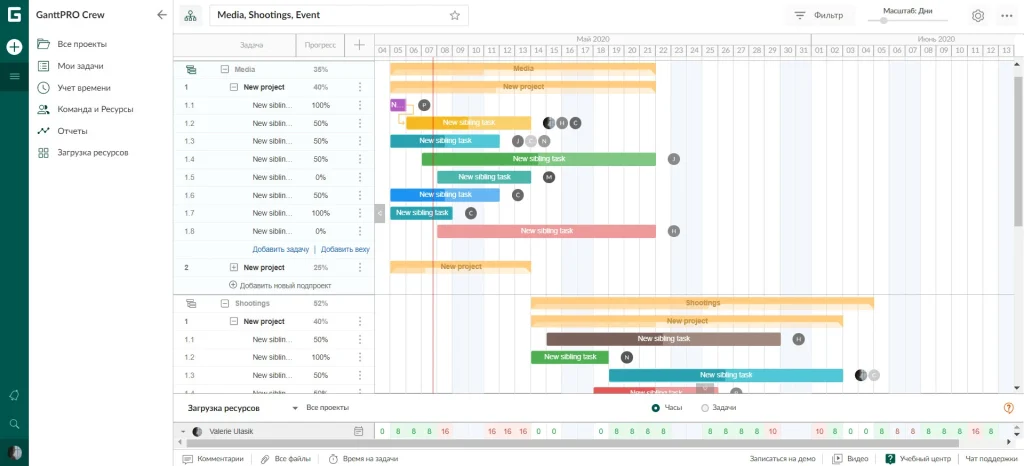
Professional assistant in project management of any complexity. It is an online version of the Gantt chart. The program is easy to use, functional and efficient. In addition to the diagram itself, it has many built-in functions.
An improvised coordinate system is displayed on the main screen of the application. The created tasks are displayed on the vertical axis, and the dates of their fulfillment - on the vertical axis, forming a graphical image that visually demonstrates the amount of completed and planned work on the object with dates. There are ready-made templates. It is effective as a tool for organizing teamwork. Its tools include:
-
Agile project management system;
-
project portfolio;
-
a set of ready-made templates;
-
option to switch to task boards;
-
customizable project-specific columns;
-
PDF format support.
Benefits:
-
Attractive design with a comfortable interface.
-
Ease of use.
-
Advanced capabilities for managing company resources.
-
Work with JIRA Cloud, Google Drive, Slack.
Conclusion
Productivity can be improved in a number of ways. For example, by rationally distributing the working time of the organization’s employees. Or by introducing modern equipment into production.
Creating a comfortable environment for the company’s employees can help increase productivity. People who are independently responsible for the tasks assigned to them take their work more seriously. A manager should not control every step of a subordinate, trusting him to freely dispose of his time and resources. Competent leadership consists in checking the work done and analyzing its result. Teamwork, involving managers and executives in joint project management will help to achieve better results.
Efficient work is impossible without well-built communications within the company. For this purpose, it is necessary to use modern tools that help to control the extent and quality of tasks performed to obtain optimal results.



